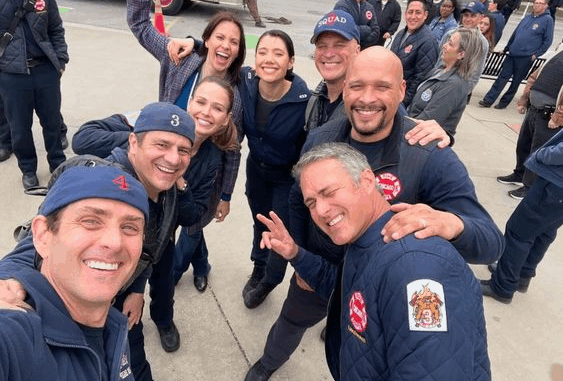
In a world where television dramas flare up and fade away with the changing whims of audiences, Chicago Fire continues to blaze strong. Now NBC’s longest-running and most beloved drama, the series has spent over a decade captivating millions with its mix of explosive action, emotional storytelling, and grounded humanity.
So what keeps Chicago Fire burning while others burn out? The secret lies in its balance — the heartbeat between spectacle and soul.
Characters That Feel Real, Not Written
From the very beginning, Chicago Fire has understood one thing: viewers don’t fall in love with a fire truck; they fall in love with the people inside it.
Chief Boden’s quiet authority. Severide’s haunted heroism. Kidd’s courage. Herrmann’s humor. Every member of Firehouse 51 carries emotional scars and moral dilemmas that make them feel achingly human.
The writers dig deep, exploring ambition, loss, friendship, and redemption in ways that feel authentic. Whether it’s a daring rooftop rescue or a quiet conversation at Molly’s Bar, the heart of Chicago Fire is always its people — not just the fires they fight.
Adrenaline Meets Emotion
Of course, no Chicago Fire episode would be complete without its signature heart-stopping rescues. Helicopter crashes, gas explosions, train derailments — the show’s action sequences remain some of the most intense on network television.
But Chicago Fire has always known that what truly keeps viewers on the edge of their seats isn’t just danger — it’s the people facing it. The emotion hits hardest when the firefighters must make impossible choices under pressure, often risking everything to save one another.
This is where the show shines brightest: in the split second between fear and bravery, where the human spirit refuses to break.

Everyday Heroes, Extraordinary Hearts
At its core, Chicago Fire celebrates everyday heroism. The firefighters, paramedics, and first responders who run toward danger while the rest of us run away.
There are no capes or superpowers here — only grit, courage, and compassion. That authenticity is what makes Chicago Fire resonate so deeply. It’s a reminder that heroism doesn’t always look cinematic; sometimes, it’s simply showing up for your community, your crew, and the people you love.
Real Issues, Real Impact
Beyond the flames and rescues, Chicago Fire doesn’t shy away from tough conversations. It tackles mental health among first responders, systemic bias, grief, addiction, and the emotional toll of trauma — all while maintaining the show’s beating heart of hope.
The writers handle these issues with sensitivity and realism, inviting viewers to think about the people behind the uniform. The result is a drama that feels both thrilling and meaningful.

A Universe That Feels Like Home
Part of Chicago Fire’s staying power comes from the world it helped create. The One Chicago franchise — including Chicago P.D. and Chicago Med — has built an interconnected universe unlike anything else on television.
Crossover events weave the shows together, offering fans a 360-degree look at life in Chicago’s emergency services. It’s a storytelling strategy that builds community not only among the characters but among the viewers themselves.
When one hero struggles, the entire city — both onscreen and off — feels it.
A Legacy Still Burning Bright
Chicago Fire has done more than survive; it has thrived. Through cast changes, shocking exits, and unforgettable rescues, it remains a series defined by heart.
Its success isn’t just measured in ratings or renewals — it’s in the emotional connection forged with its audience. After all these years, fans still tune in not just to see fires extinguished, but to see hope reignited.
As long as Chicago Fire continues to honor the bravery of its heroes and the humanity beneath their helmets, its embers will keep burning — lighting the way for network television’s future.
